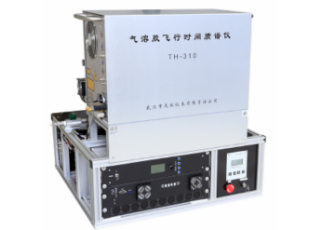

































Th-310 aerosol time-of-flight mass spectrometer is the latest generation of single particle aerosol time-of-flight mass spectrometer in the world. In 2016, Wuhan Tianhong introduced foreign technology and produced it. It has a number of world leading technologies. It is an integrated mass spectrometer with online sampling and single particle diameter measurement functions. Th-310 aerodynamic lens was injected into the sample, and its flight velocity was detected by double laser scattering unit to calculate the diameter of the particle in vacuum. Then the particle was desorbed and ionized by UV pulse laser. Finally, the positive and negative ionons were analyzed by bipolar time-of-flight mass spectrometry.
The basic function of th-310 is to detect the particle size and chemical composition of individual aerosol particles on-line, and the extended function is to perform real-time online source apportionment of PM2.5.
It can realize online and offline source analysis
Technical highlights: trigger laser and ionization laser are close to each other, and ionization laser and particles meet head-on to improve the strike rate. Fast trigger, high frequency pulse laser, can make the overall detection speed of more than 100 pieces per second. The sample does not need pretreatment and dilution, and the equipment has a wide range of application of PM2.5 concentration.
PM 2.5 online source analysis:
Characteristic ion method and quasi chemical mass balance method were used. The results are not only comparable with peers, but also related to the results of traditional source analysis methods. The single particle data were returned to the source class level for fitting analysis. It can reduce the influence of secondary reaction from the generation to detection of aerosol particles, and also reduce the difference caused by artificial delimitation of characteristic ions. The results are more stable and representative. At the same time, considering the transmission efficiency of the aerodynamic lens and the Mie scattering effect, the source apportionment of the particles is carried out in sections.
Environmental monitoring: online and offline aerosol pollution source analysis, haze formation mechanism monitoring and research, PM2.5 single particle chemical composition analysis and secondary reaction process monitoring research. Other fields: climate change research, meter scattering effect of aerosol particles, engine emission research, nano materials and powder products.

Official account